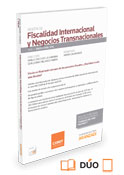
The new Pillar Two world is now a reality. After an unprecedented effort of worldwide tax coordination, about 40 jurisdictions have implemented or are planning to implement the global minimum tax under Pillar Two, effective from January 2024 or 2025. Despite this, the framework has been the subject of extensive debate, with its scope narrowed through various exemptions and transitional provisions. This raises questions about its legitimacy, effectiveness, and practicality.
While 140 countries have agreed to implement Pillar Two under the OECD Inclusive Framework, notable economies such as China, India, and the United States have yet to do so; in contrast, all EU Member States are mandated to transpose the EU Directive, which could affect tax competitiveness. As discussions on the Pillar Two framework for multinational enterprises continue, a new horizon unfolds in this era of international taxation: a global minimum tax for the super-rich (unpretentiously called by the OECD high-net-worth individuals).
The debate started some years after the Pillar Two Model rules were unveiled to the world. In their Global Tax Evasion Report of October 2023, the EU Tax Observatory put forth a proposition for a minimum tax on ultra-high-net-worth individuals. The Observatory underscored the urgency of this debate in light of escalating income and wealth disparities, burgeoning public debt, and the imperative to finance climate action, healthcare, education, and public infrastructure; to this end, the report delineates that billionaires’ effective tax rates are negligible, ranging from 0% to 0.5% of their wealth, indicating a regressive tax system at the upper echelons.
Following this route, last June, Gabriel Zucman, the economist and Director of the EU Tax Observatory, presented a detailed plan for a coordinated minimum effective tax on ultra-high-net-worth individuals, upon request from the Brazilian G20 presidency. The proposal advocates for a 2% minimum effective tax on individuals with wealth exceeding USD 1 billion, which, according to their estimates, could generate USD 200-250 billion annually on a global scale.
Zucman posits that wealth, particularly with observable market values, serves as the most reliable metric for tax calculation, being less susceptible to manipulation than income. He clarifies that the minimum tax is intended to bolster the income tax system rather than act as a standalone wealth tax. For those already paying an equivalent of 2% of their wealth in income tax, no additional tax would be levied. Others would be subject to a supplementary tax to meet the 2% threshold. Zucman outlines several domestic implementation strategies, including a presumptive income tax, a direct wealth tax, or an expanded income tax encompassing unrealized capital gains (such as the “billionaire minimum income tax” proposed in the United States by the Biden administration). He acknowledges the challenges in valuing non-publicly listed assets and the potential for wealth concealment in less transparent holdings and hard-to-value investments.
This report was on the table when, on July 25-26, 2024, G20 Finance Ministers and Central Bank Governors met in Rio de Janeiro, Brazil. The meeting concluded with a communiqué that reaffirms their commitment to the BEPS 2.0 inclusive framework and commends the progress on the implementation of Pillar Two. Among other topics, the declaration indicates the intent to engage cooperatively on the effective taxation of ultra-high-net-worth individuals in the G20 and in other forums.
The European Union has not disclosed any initiatives or research in this domain. Nonetheless, it is plausible that the EU might entertain such a proposal, given its prior engagement with tax equity issues and its early adoption of the Pillar Two framework. The EU’s history suggests a potential alignment with this initiative in due course.
The call for action initiated by Zucman and echoed by the OECD is now gaining broader support. However, given the tax incentives for high-net-worth individuals present in various EU Member States, a coordinated, obligatory EU-level initiative may be necessary for the enactment of a minimum tax. A unilateral approach or voluntary agreement does not seem feasible.
The practical application of a global minimum tax on the super-rich presents a complex array of challenges. Chief among these is the accurate valuation of a wide range of assets, from liquid investments to private holdings and intangible property. Additionally, achieving a consensus among nations and ensuring compliance with diverse legal frameworks are significant hurdles that must be overcome. The G20’s recognition of the importance of addressing tax fairness indicates a growing consensus on the need for reform. However, translating this recognition into concrete policy measures requires a concerted effort to harmonize tax regulations while preserving the fiscal autonomy of individual states.
The proposal for a global minimum tax on billionaires represents a bold step towards addressing systemic fiscal inequities. While the path to its realization is fraught with challenges, the potential benefits of such a policy are considerable. As the international community continues to deliberate on the most effective means of taxing the ultra-wealthy, the principles of fairness, cooperation, and pragmatism must drive the discussion to learn from the lessons of the global minimum tax on multinationals.
Disclaimer: The views expressed in this article are exclusively those of the author and should not be ascribed to any individual or entity associated with the author’s professional context.



